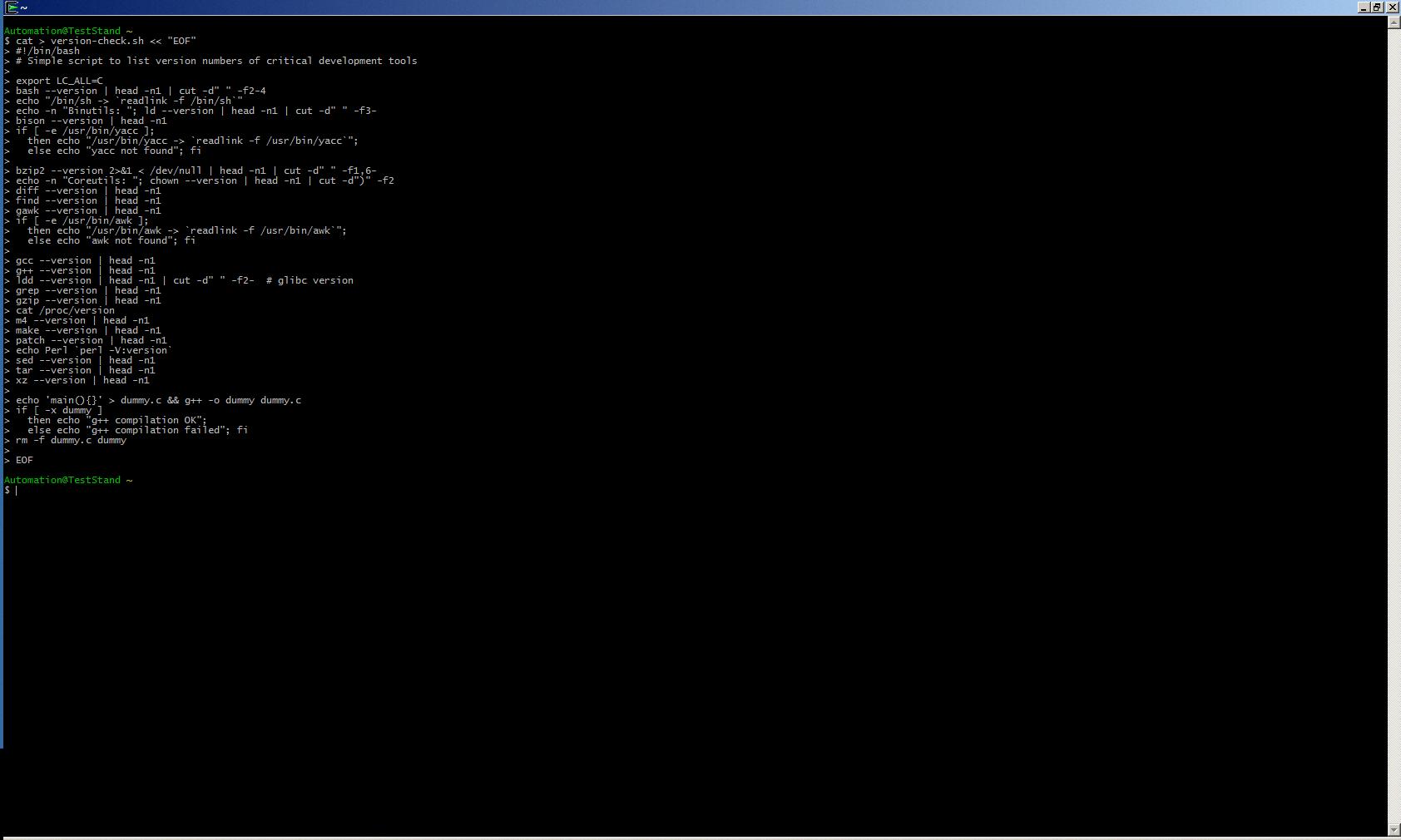The greater-than sign in the bash shell is an essential tool for redirection and file manipulation. It is a versatile symbol that holds significant power when it comes to managing input and output in command-line operations.
One of the primary uses of the greater-than sign (>) is to redirect the output of a program to a file. By simply appending this symbol after a command, you can direct the output to a file instead of displaying it on the terminal. This allows you to capture and save the results of a command for later use or analysis.
For example, let’s say you have a program that generates a list of important data on the terminal. Instead of manually copying and pasting this information into a separate file, you can use the greater-than sign to automatically save it. Just type the command followed by > and the file name you want to create or overwrite. The output will be redirected to that file.
Another useful application of the greater-than sign is to create or overwrite an existing file. If you want to generate a new file with specific content, you can use this symbol to accomplish that. By typing the desired content on the terminal and redirecting it using >, you can create a file with the exact information you need.
Now, let’s talk about the double greater-than sign (>>), which serves a slightly different purpose. Unlike the single greater-than sign, the double version appends content to an existing file instead of overwriting it. This is particularly handy when you want to add new data to an existing file without erasing the previous content.
For instance, imagine you have a log file that records important events. Every time a new event occurs, you can use the double greater-than sign to append it to the log file. This way, you maintain a chronological record of events without losing any previous entries.
The greater-than sign and double greater-than sign in bash are essential tools for redirecting output and manipulating files. Understanding how to use them effectively can greatly enhance your productivity and efficiency in the command-line interface. So, experiment with these symbols and explore the possibilities they offer in your Linux journey.
What is Greater Than Sign in Bash?
In the Bash shell, the greater-than sign (>) is a symbol used for redirection. It is used to redirect the output of a command to a file or device. This allows you to save the output of a command to a file rather than displaying it on the screen.
Here are a few examples of how the greater-than sign can be used in Bash:
1. Redirecting output to a file:
“`
Command > file.txt
“`
This redirects the output of the command to the file named “file.txt”. If the file already exists, it will be overwritten. If it doesn’t exist, a new file will be created.
2. Appending output to a file:
“`
Command >> file.txt
“`
This appends the output of the command to the end of the file named “file.txt”. If the file doesn’t exist, a new file will be created.
3. Redirecting output to a device:
“`
Command > /dev/null
“`
This redirects the output of the command to the null device, which essentially discards the output. It is commonly used to suppress unnecessary or unwanted output.
4. Redirecting output and error to different files:
“`
Command > output.txt 2> error.txt
“`
This redirects the standard output of the command to “output.txt” and the standard error to “error.txt”. This allows you to separate the regular output and any error messages generated by the command.
In addition to redirecting output, the greater-than sign can also be used for input redirection. By using the less-than sign (

What is ‘>’ in Bash?
In the Bash programming language, the symbol ‘>’ is used as a redirection operator. It is primarily used to redirect the output of a command or program to a file or another command.
When the ‘>’ symbol is used, it instructs Bash to take the output that would normally be displayed in the terminal (stdout) and instead write it to a file. If the file already exists, its contents will be overwritten. If the file does not exist, a new file will be created.
Here is an example of how the ‘>’ operator is used:
$ command > output.txt
In this example, the output of the “command” is redirected to the file “output.txt”. The contents of the file will be replaced with the output of the command.
If you want to append the output to an existing file instead of overwriting it, you can use the ‘>>’ operator:
$ command >> output.txt
This will append the output of the command to the end of the existing file, or create a new file if it doesn’t exist.
Using the ‘>’ and ‘>>’ operators can be helpful when you need to capture the output of a command or program for later use, or when you want to store the output in a file for further analysis or processing.
The ‘>’ symbol in Bash is a redirection operator that allows you to redirect the output of a command or program to a file, overwriting its contents. The ‘>>’ operator, on the other hand, appends the output to an existing file or creates a new file if it doesn’t exist.
How Do You Check for Greater Than in Bash?
In Bash, to check for greater than, you can use the ‘-gt’ operator. This operator is specifically designed for comparing numeric values. It allows you to determine whether one value is greater than another.
Here is an example of how you can use the ‘-gt’ operator in Bash:
“`bash
#!/bin/bash
# Assigning values to variables
Num1=10
Num2=5
# Checking if num1 is greater than num2
If [ $num1 -gt $num2 ]; then
Echo “num1 is greater than num2”
Else
Echo “num1 is not greater than num2”
Fi
“`
In the above example, we have two variables ‘num1’ and ‘num2’ assigned with values 10 and 5 respectively. We then use the ‘-gt’ operator within the if statement to check if ‘num1’ is greater than ‘num2’.
If the condition is true, the script will output “num1 is greater than num2”. Otherwise, it will output “num1 is not greater than num2”.
It’s important to note that the values being compared should be numeric, as the ‘-gt’ operator is specifically designed for numerical comparisons.
What Does >> Do in Linux?
The “>>” operator in Linux is used for output redirection. Specifically, it is used to append the output of a command or program to an existing file. This operator allows you to add new information or data to the end of a file without overwriting its existing content.
When you use the “>>” operator, the output of a command or program is appended to the specified file, creating a larger file that includes both the original content and the new output. This is particularly useful when you want to continuously add data to a file, such as log files or records.
To illustrate the usage of the “>>” operator, consider the following example. Let’s say you have a file called “data.txt” with some existing content, and you want to add new data to it using the output of a command called “generate_data”. You can use the “>>” operator as follows:
Generate_data >> data.txt
This command will execute the “generate_data” command and append its output to the end of the “data.txt” file. If “data.txt” already contains some content, the new output will be added below the existing content.
It’s important to note that if the specified file does not exist, the “>>” operator will create a new file with that name and append the output to it. However, if the file already exists, the new output will simply be appended to the end of the file without affecting its existing content.
The “>>” operator in Linux is used for appending the output of a command or program to an existing file. It allows you to add new data to the end of a file without overwriting its existing content.
Conclusion
The greater-than sign in bash is a versatile tool for file redirection and comparison operations. When used for file redirection, the single greater-than sign (>) is used to overwrite or create a file, while the double greater-than sign (>>) is used to append data to an existing file. These operators are commonly used together to modify files in Linux. On the other hand, the ‘-gt’ operator in bash is a comparison operator that checks if one value is greater than another. It returns a true or false result based on the comparison. Both the file redirection and comparison functionalities of the greater-than sign are essential in bash scripting and can greatly enhance the efficiency and effectiveness of various tasks.








